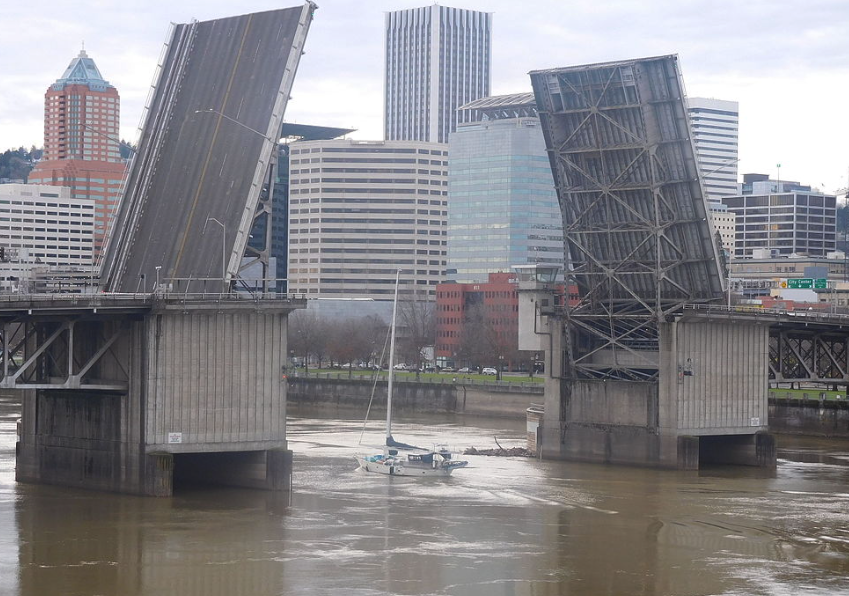What City Observatory did this week
Building a bridge too low–again. In their effort to try to revive the failed Columbia River Crossing (a $5 billion freeway widening project between Portland and Vancouver) the Oregon and Washington transportation departments are repeating each of the mistakes that doomed the project a decade ago. The latest blunder: again planning for too low a bridge to accomodate river navigation. The Columbia River is a major industrial thoroughfare in its own right, and the protecting river navigation is the charge of the US Coast Guard under the 1899 Rivers and Harbors Act. The two state DOTs have planned for a fixed, 116-foot high span in place of the existing lift-bridge which allows for vessels as high as 178-feet to traverse the bridge. Last month, the Coast Guard issued its finding that “reasonable needs of navigation” require at least the 178-foot vertical clearance.
The Oregon and Washington DOTs are in full denial mode, arguing that building a span with that clearance would be unnecessarily expensive and inconvenient to vehicle travel (with a high fixed span) and that building a new moveable span would require building the largest moveable span in the world. A quick look around the Portland region shows that isn’t true: The region has at least three bascule bridges with comparable clearances, some built almost a century ago. But the DOTs seem determined to try to pressure the Coast Guard to allow a lower fixed span, something the agency has signalled its not willing to do. Just as a decade ago, the failure to realistically address navigation needs is going to delay, and perhaps defeat, efforts to replace the I-5 bridges.
Must read
What “Ban Cars” really means. There are few things less incendiary in public discourse that the “War on” framing of an issue. Just a bit tongue in cheek, there’s the “War on Cars” podcast, which explores the pervasive costs, externalities and inequity of our car based transportation system. While it grabs attention, to some, the framing seems needlessly provocative. Writing at Jalopnik, Doug Gordon provides some background and nuance beyond the battle cry. As he explains, the opposition to cars is really about creating better choices.
The goal of “the ban cars movement,” as I see it, is not to render cars obsolete. It’s to give people the choice to live a life where car ownership, and car dependence, are unnecessary — regardless of socioeconomic status or physical ability to operate an automobile. It starts in dense urban areas, places where a few policy tweaks could turn public transit, cycling and walking into the lowest-stress, most convenient options.
In short, our car-dependence has become so deeply woven into the fabric of everyday life that we’re unable to recognize or question it. The “ban cars” rhetoric is one way of shocking people into re-thinking these unquestioned assumptions.


